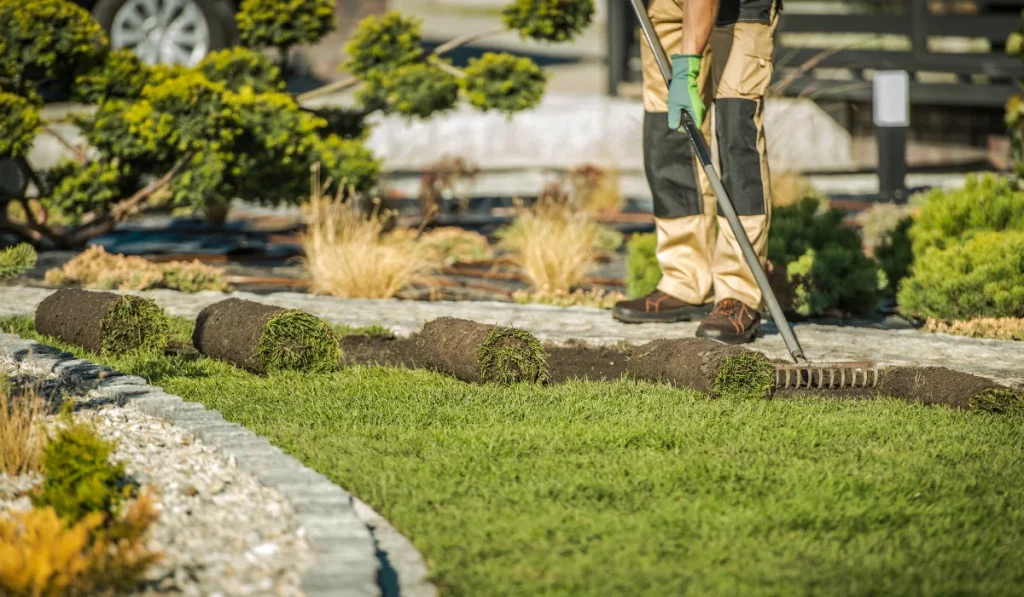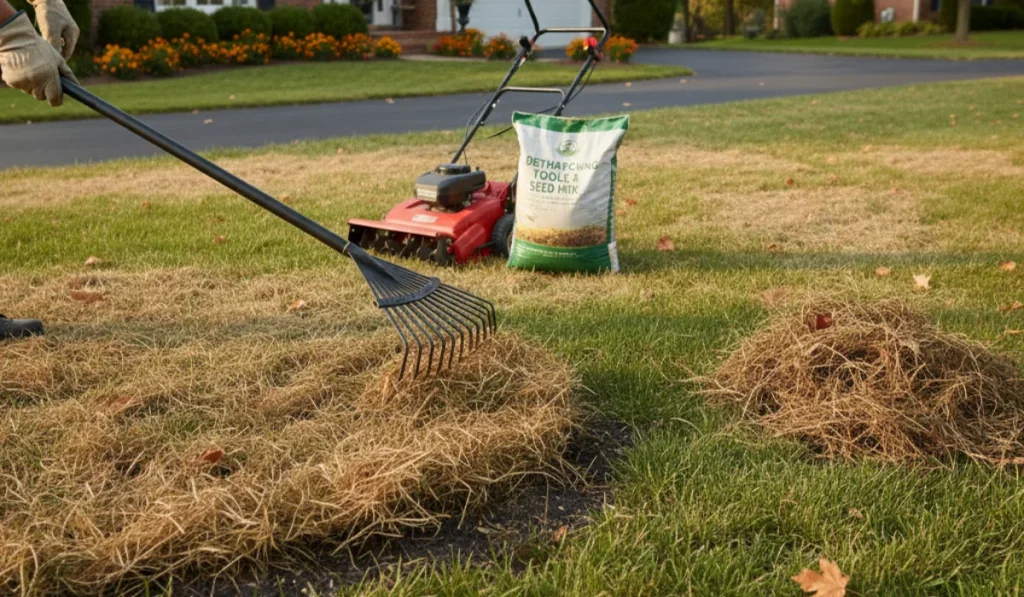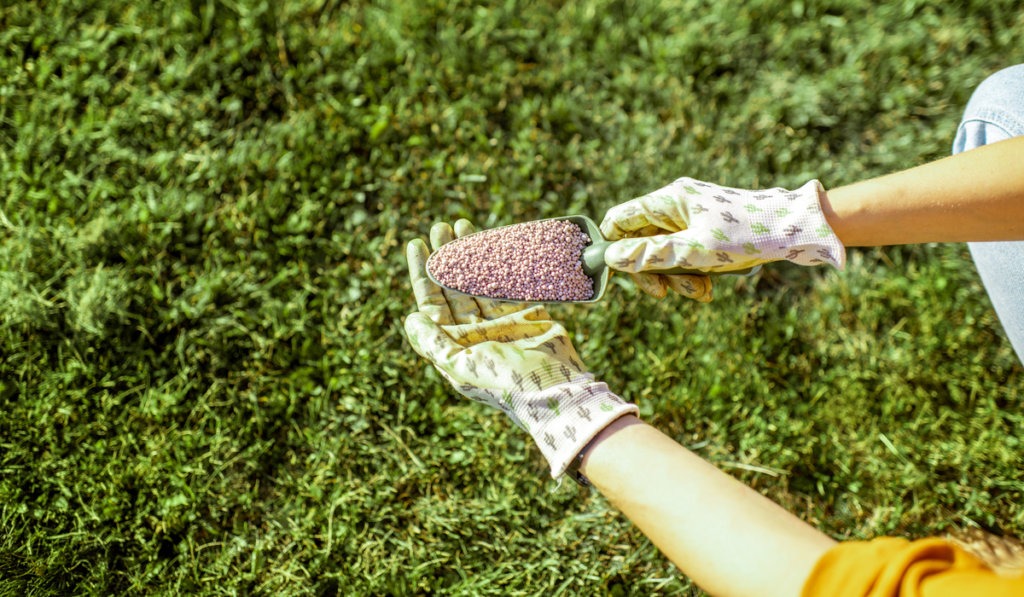When your existing lawn is more brown than green, it might be time for a complete renovation. California homeowners often face a big decision when redoing their yards: sod vs. seed. Each has its advantages, depending on your timeline, budget, and climate.
Whether you’re installing a brand-new lawn in the backyard of your San Diego bungalow or replacing an existing grass patch in a Central Valley rental, this guide will help you decide if laying sod or planting grass seed makes more sense for your specific situation.
Key Takeaways
- Sod gives you a finished lawn faster but costs more and offers fewer choices in grass types and care.
- Seed is more budget-friendly and flexible, but it takes longer to grow and requires more attention during the early stages.
- Sod handles erosion and foot traffic well, while seeded lawns work better for large yards and custom blends.
- Both lawn options require soil preparation, watering, mowing, and care to stay healthy throughout California’s long growing season.
Sod vs. Seed: Key Differences

Before choosing how to renovate your lawn, it’s helpful to compare the benefits of sod and seed. The table below breaks down the key differences so you can quickly decide:
| Features | Sod (Instant Lawn) | Seeded Lawn |
|---|---|---|
| Establishment Time | 2–3 weeks to root | 1–2 months to germinate |
| Cost per Sq Ft | Higher sod costs | Lower cost per square foot |
| Installation Time | Quick (1–2 days to install sod) | Slower (spread + grow) |
| Erosion Control | Immediate | Delayed |
| Maintenance (Initial) | Moderate | High |
| Flexibility in Grass Type | Limited | High (tall fescue, ryegrass, etc.) |
| Best Season to Start | Spring to early fall | Early fall or spring |
| Foot Traffic Tolerance (Early) | High | Low |
| Weed Risk | Low | High |
| DIY-Friendly | Yes, with effort | Yes, easier DIY option |
Factors to Help You Decide Between Sod and Seed in California
To determine whether sod or seed is the better option for your yard, consider a few key factors. The sections below break down what matters when renovating a lawn in California:
Budget
Cost is one of the first things California homeowners consider. Sod costs more upfront because you’re paying for a fully developed product and the labor to install it.
If you’re working with several thousand square feet, those numbers add up quickly. Planting grass seed is more affordable and well-suited for large-scale DIY landscaping projects.
You can even opt for hydroseeding for larger properties. This slurry application accelerates germination and enhances seed-to-soil contact.
Timeline
Do you need a green lawn in time for a backyard wedding or real estate open house?
Sod offers instant gratification and the curb appeal of a new sod lawn in just days. With grass seed, you’ll wait weeks for it to germinate and months to fill in. During that time, you’ll need to be extra careful with watering, foot traffic, and mowing.
Erosion Control
For hilly properties in coastal California or places with sandy soil types, erosion control is key.
Sod, especially Bermuda grass or fescue sod, holds the topsoil in place as soon as it’s laid. A seeded lawn takes time to establish, leaving bare dirt vulnerable to washout. Mulch or erosion mats can help, but they add extra steps.
Variety of Grass
Choosing the correct type of grass for your area is easier with seed. Want a drought-tolerant type? No problem.
Do you need a cool-season blend, such as ryegrass or Kentucky bluegrass, for higher elevations?
You’ve got options.
Sod is limited to what local farms can grow, often warm-season grasses like Bermuda grass in Southern and Central California.
Water Availability
Water regulations and drought concerns affect most of California.
New sod and seeded lawns both require consistent moisture to establish, but seed typically needs more frequent watering to support the germination process. Use a sprinkler system to maintain consistent moisture.
After establishment, varieties like TifTuf or tall fescue reduce long-term lawn care needs.
Soil Conditions
Before installing sod or planting seeds, it’s a good idea to conduct a soil test.
This helps you understand your soil type and nutrient needs, so you can amend the topsoil before planting grass seed or laying sod.
For clay-heavy soils in areas like the East Bay, consider aerating and mixing in compost before laying down new grass. Good prep means a healthier root system and a more beautiful lawn over time.
Foot Traffic
Kids, dogs, parties, and some lawns require more attention than others.
Sod is the better choice if your lawn will be used immediately. Its dense root system and mature turf can handle foot traffic shortly after installation.
A seeded lawn requires more time before it can withstand wear, and you should reseed thin spots during the first year.
Weed Control
Sod gives you a weed-free head start. Its thick cover shades out weed seeds and establishes quickly.
Seeded lawns, especially those started without mulch, are prone to weed invasion while the grass is young. Frequent mowing and overseeding may be necessary to help the new grass establish dominance over time.
Long-term Maintenance
Regardless of how you start, long-term lawn care comes down to mowing, fertilizing, and seasonal overseeding. Fescue and ryegrass lawns may require more mowing during the growing season, especially in full sun. Bermudagrass needs less mowing but may require dethatching.
Once your lawn is established, routine care remains about the same; however, the healthier the root system, the less you’ll need to water or reseed.
Frequently Asked Questions
Can I mix sod and seed when renovating my lawn?
Yes, combining sod and seed can help lower costs. Use sod in visible or high-use areas and grass seed in less-trafficked spots. This approach effectively balances budget, function, and appearance.
How soon can I mow after laying sod or planting seed?
For sod, wait two to three weeks until roots are established. For seed, mow when the grass reaches about four inches. Early mowing strengthens the lawn and encourages denser growth over time.
Is it okay to install sod or seed in California during the winter?
Winter installations can yield poor results because cold soil hinders root development. For optimal success, wait until early fall or spring, when soil temperatures are conducive to strong root growth.



